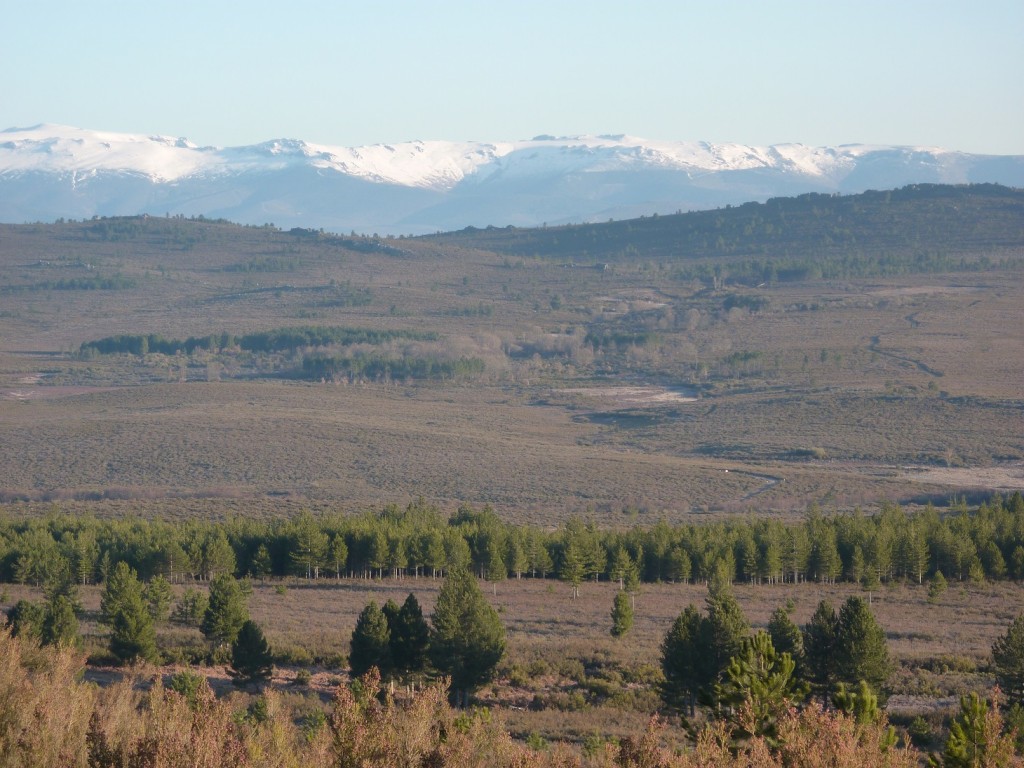James Richardson travelled on our 'Wolf-watching in Spain' tour and submitted this entry to our writing competition.
View of the hills by Ed Drewitt
For me, few animals encapsulate the sense of ‘wild’ more than the Wolf. The chilling howl of a pack of Wolves is something I have yet to experience first-hand, but when I eventually do I hope it will ignite some hair-raising primordial feeling within that few other sounds can. From the moment man migrated out of Africa hundreds of thousands of years ago and into its territory, the Grey Wolf has been the fleeting shadow in the dark forests, the subject of myth and folklore, from Europe to India, from Siberia to Mexico. The taker of lambs, the ‘bringer of death’, the ‘killer next door’.
And so the Wolf has been ruthlessly persecuted, whether or not the threat is real or perceived and in much of its former range, including the UK, is now relegated to legend.
But the Wolf is returning. It was never exterminated from the more remote mountains and deepest forests of the continent. The continuing widespread abandonment of marginal land throughout Europe is allowing prey species to flourish once more, and following them are their predators. North-western Spain is at the forefront of their re-establishment.
So when the opportunity arose to see Iberian wolves Canis lupus signatus (signatus because of their unique and distinctive markings), I booked onto the trip with childish enthusiasm.
Arriving in Asturias to the late autumn sunshine, our group, led by Byron Palacios, made the drive south through the mighty Cantabrian Mountains, full of their own spectacular wildlife, to Villardeciervos in the heart of Wolf country. Translating roughly as ‘herd of deer, this sleepy village was to be our base for the next four days of excursions into the surrounding forests and plains; the name boded well for potential prey species at least.
The strong Spanish sun quickly burns off the mist which hugs the cold valley floor, exposing a pastel-coloured landscape of cinereous Spanish Broom, khaki green tree heather, shady pines and golden Pyrenean Oaks. Through the telescopes, Iberian Red Deer push through the deceptively tall scrub. Instantly noticeable is their nervous disposition, staring intently into the heathland for minutes on end only to resume browsing once more. A Roe Deer barks a loud warning in the valley below. A Crested Tit shuffles about the pines, uttering its bossy call in disapproval of our presence, and Dartford Warblers restlessly flit about the tree heather, chattering constantly.
A stroll along the edge of a reservoir to a viewpoint offers a short glimpse of a European Otter. The walk back along the same route offers something equally surprising - a fresh Wolf scat. They’re around, and they’re closer than we think.
The next day as the sunlight is slowly being erased by the advancing shadows of the hills, Laura, our co-leader, spots something in the far distance. A wave of excitement moves through the group as everybody rushes to train their binoculars on the right area. To the sharpest eyes the telescopes reveal three Wolves briefly pausing on a rock bathed in the late evening sun, before trotting purposefully through the broom to a recently ploughed field. The fading light and the distance soon beat us, but everybody returns to the hotel in high spirits.
The final day brings a change of scene - a trip a cross the lazy river Esla to the vast, fertile plains to the east, in search of Great Bustards. It’s not long before three of these huge birds are spotted, pacing deliberately across a field. In the foreground is a female Peregrine Falcon, perched on a ridge of ploughed soil. To our amusement the Peregrine is mobbed half-heartedly by a male Hen Harrier, as if it’s well aware of its own vulnerability in different aerial circumstances.
Suddenly, my instinctive peripheral vision detects movement. A feeling of genuine disbelief precedes a shout to the others: ‘Wolves! Wolves. In front of the van!’
In broad daylight, 200 metres in front of our vehicles, three wolves are running at full speed over empty fields and across the road from the south. Their rich chocolatey coat and distinctive white-edged muzzles are clearly visible. A flurry of camera, binocular and telescope activity ensues. I climb on top of the van and watch as the small pack slows down to a canter, constantly checking on each other’s whereabouts. Moving further away, they trot towards some tall poplars, finally disappearing over the horizon and, as they do so the group, totally elated by this unexpected encounter, are smiling and laughing.
Byron’s response to the sighting summarises the feeling that we will all take away from that last day of our trip. ‘That was one of the sightings of my career.’ It will certainly be an experience that I shall never forget.
Read more about our 'Wolf-watching in Spain' holiday.



 Loading search...
Loading search...
